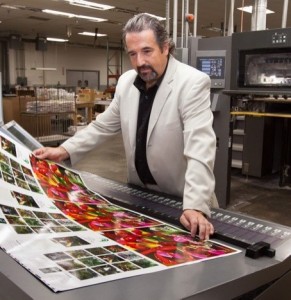 By Terry Rayner
By Terry Rayner
If there is one thing I have learned during my career in the printing industry – it is that we are in a business of constant change. From the technology that we use to produce printed products, to the way our customers perceive and purchase printing, our business has changed dynamically!
Yet when you go into a printing operation and look at the management styles and workflows, most of us are directing production the same way we did 10+ years ago.
While we have adopted a host of new technologies and all levels of equipment automation, we haven’t changed the basics (how we manage).
We still direct our frontline employees in a “command management” style, rather than drawing out the best from them in a collaborative and team environment. Most of us (management) take the easy route, we see a problem and instead of getting together with the employees to review the issues and to ask how “we” (the collective) should solve it, “we” (singular) rush in and give a solution on how to fix the problem.
Is it any wonder why “the fix” does not stick?
To make lasting changes that will improve quality (eliminate waste), your job as a leader is to embrace change and lead through a collaborative and coaching style.
I believe that today, people come to work and expect more, they want to be more than “production robots,” they want to be involved. I don’t think anyone gets up in the morning with the attitude “I am going to make a mistake today” – however, because most printing companies manufacture without controls or standard work procedures, when an error occurs the first thing we do is to blame the employee!
“They did not read the job ticket, they did not set the machine up correctly, they did not take enough care… etc., etc.”
…While most of the time the error was a function of the fact that we (management) had not worked with our employees to engineer procedures (Poka Yoke / mistake-proofing) to make it so that a mistake could not made.
 So, when an error occurs, don’t look at the employee – look at the process!
So, when an error occurs, don’t look at the employee – look at the process!
Examine what happened and then quickly get your team together (your team is the employees that produce the product – not five or six department heads or managers). Explain what occurred and ask for suggestions on how you (the collective) can learn from the error and get thoughts on how to build a Poka Yoke (a mechanical or system control) that will stop the same error occurring again.
Never under estimate the power of what you do and say; act in a positive and confident manner as you lead your team. State the issue and ask questions of your team – then listen! Use a leadership style like this and you will create enduring change. Not only will you get great ideas on how to solve the issue at hand, but in addition you will get ideas on how to eliminate other wastes and to become more efficient.
Implementing Lean into your company is not just about “The process of Lean,” it is about management changing to lead in a new and different way.
I challenge you to embrace change by listening and by including everyone in your company! You will then be able to use the great ideas that emerge to make transformative change – that will improve your business, giving you real market advantages!
With over 25 years of print management experience Terry Rayner is a Lean Thinking Guru. Using his blend of customer focused philosophies and continuous improvement methodologies he has led companies through major changes to emerge re-energized. Certified in Lean Six Sigma Processes for manufacturing, office and sales environments he is relentless in his pursuit to eliminate wastes, which increase efficiencies and effectiveness; ultimately leading to higher customer satisfaction and significant profit growth.
Connect with Terry: Getleanthinking.com / LinkedIn / Twitter










